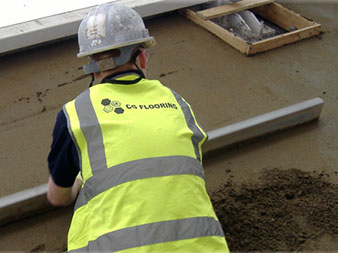
Next, you can prepare the self-leveling compound. So, take your time to get the floor completely clean before applying the self-leveling compound. Remember, you want the final floor surface leveled without bumps, as these can weaken self-adhesive vinyl tiles. Once you repair the cracks and holes on the floor and sand down those high spots, applying a self-leveling compound will result in an attractive surface that is easy to work with when installing self-adhesive vinyl tiles.įirst, sweep and vacuum the floor to get rid of the sanding dust. Self-leveling compound helps to achieve a flat, smooth concrete surface on which to lay your tiles. Step 5: Spread self-leveling over the concrete Use the spirit level one more time to ensure there are no high spots left on the floor. Polish those higher spots until they are level with the rest of the floor. A diamond disc grinder will come in handy when leveling a severely uneven floor. Use an electric floor grinder to even out large sections on the floor, or use 40 to 60 grit sandpaper to level a few holes. A simple carpenter’s level will take the guesswork out of locating the spots that need to be leveled. You might find it hard to spot uneven areas, and the floor might look perfectly even to the naked eye. Use a spirit level to identify uneven spots. The difference in height between two spots on the floor can create enough pressure for the tiles to unglue and separate. Stick-and-peel vinyl tiles do not do well on uneven surfaces. Let the compound dry for 24 hours before you can repair the rest of the concrete floor. Ensure the surface over the hole, now covered with the filler, is reasonably flat and leveled. Use the flat side of a trowel to level the patching compound and keep it filled inside the holes. Pour the patching compound into the holes and cracks. Getting rid of the dust helps the hole patching compound to go on smoothly and for the vinyl tiles to adhere better.


Use a small vacuum brush attachment to clean out the dust in the chiseled holes. Chisel moderately to avoid expanding the holes unnecessarily. Use a chisel to straighten the edges of the holes for easy application of floor patching compound.

You can achieve a smooth finishing for your vinyl tiles by taking the time to repair cracks and holes before installing the tiles.įirst, prepare the holes for filling. Step 3: Repair gaps and holesĪny dents, dings, and other unevenness on concrete floors will show through the stick and peel tiles, making for unsightly flooring. Even small particles of dirt can telegraph through thin self-adhesive vinyl tiles. You want to pick up as much dust and debris off the floors as possible. Step 2: Vacuum the floorĪfter stripping all unwanted material that can keep your vinyl tiles from adhering to the floor, you can now vacuum the floor.Ĭhoose the right vacuum attachments for hard-surface floors. Uproot any fasteners, nails, or adhesive left on the floor.

Remove previous sheet vinyl, peel and stick vinyl, or other types of carpeting. Mop the floors with this solution to remove any traces of wax. Mix a ¼ cup of ammonia with a gallon of warm water. Self-adhesive tiles will not stick to wax or any oily surfaces. If your concrete floors are waxed, first remove the wax coat before installing vinyl tile. Follow these steps to get your concrete floor ready for peel and stick tiles.


 0 kommentar(er)
0 kommentar(er)
